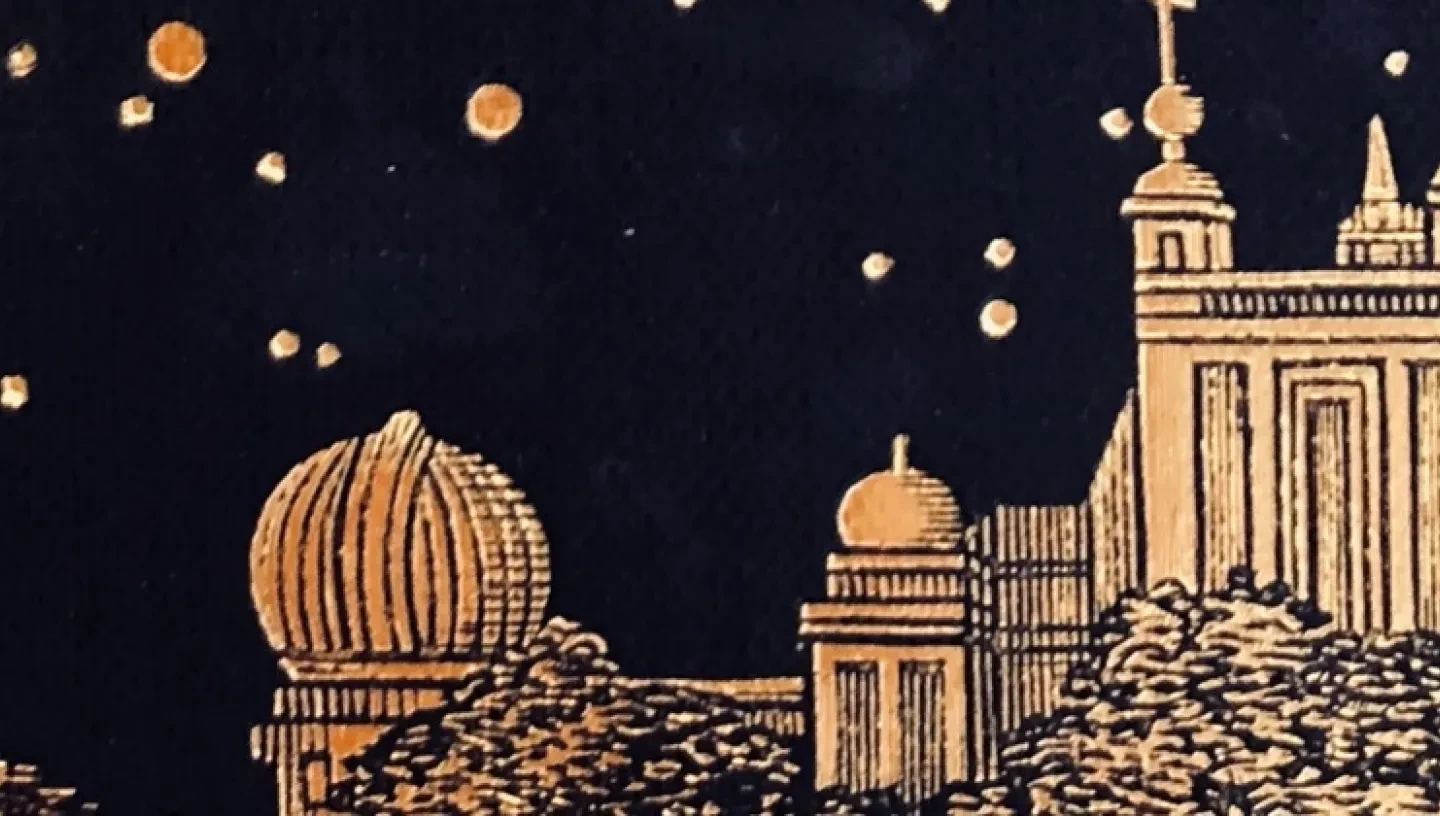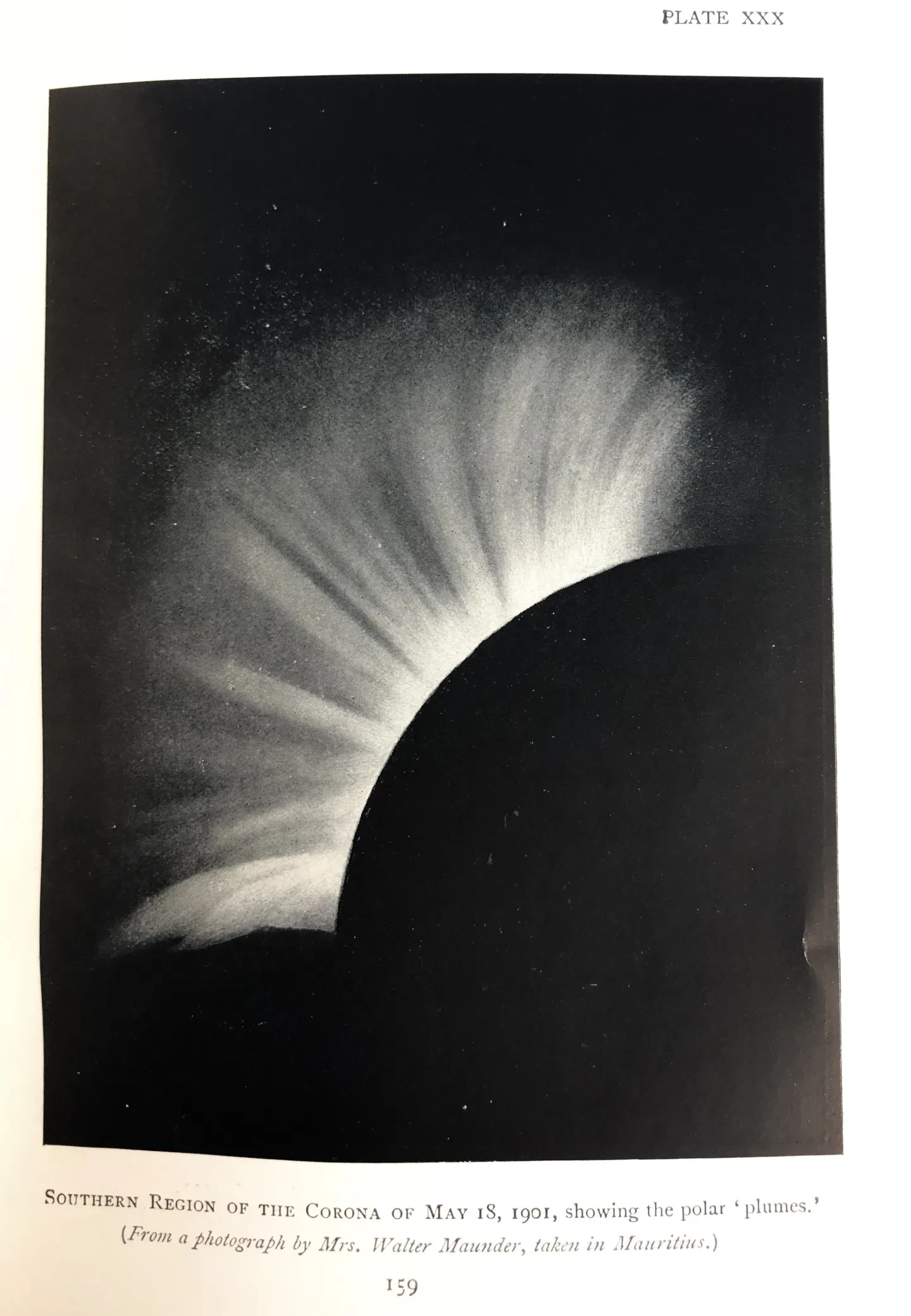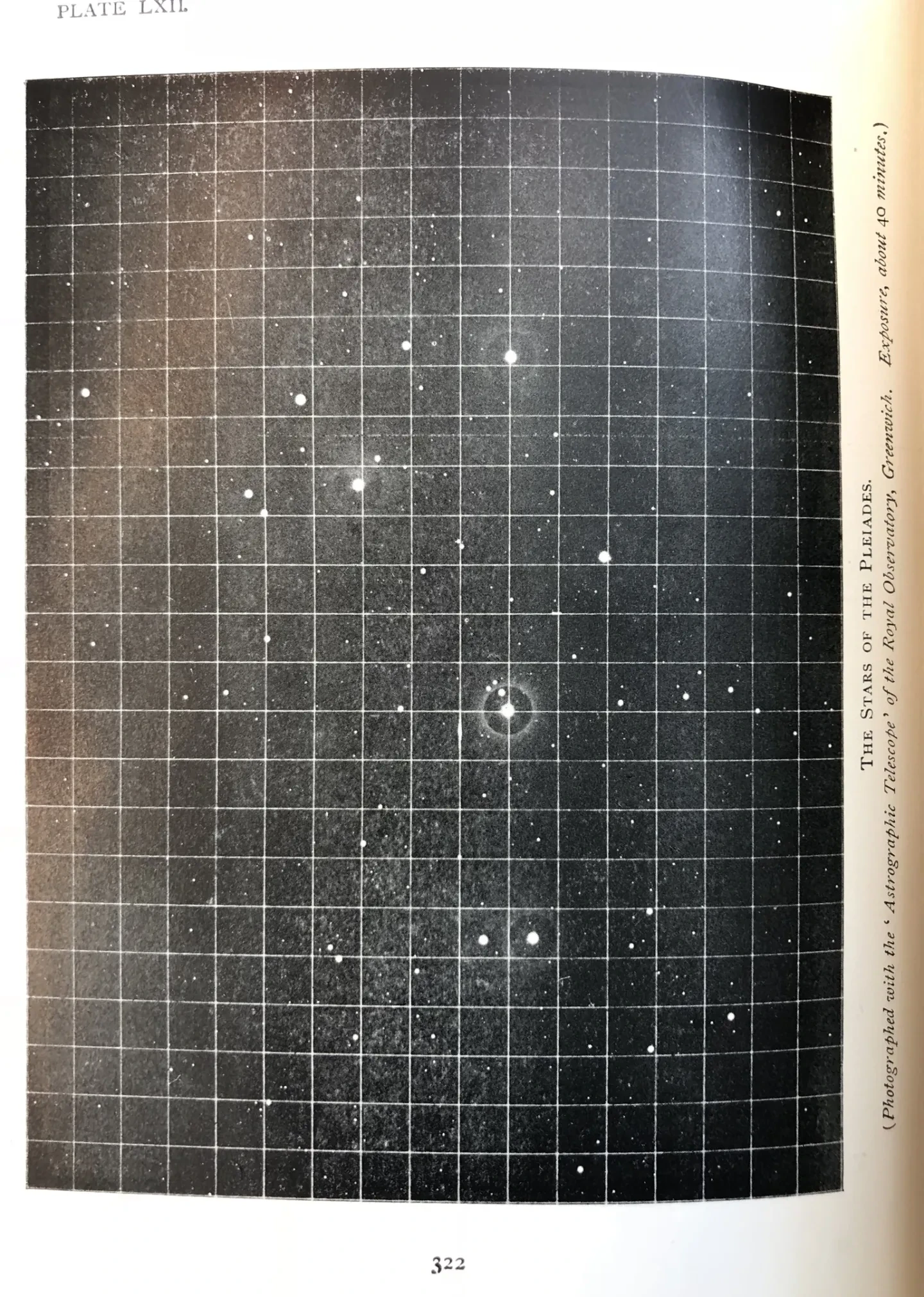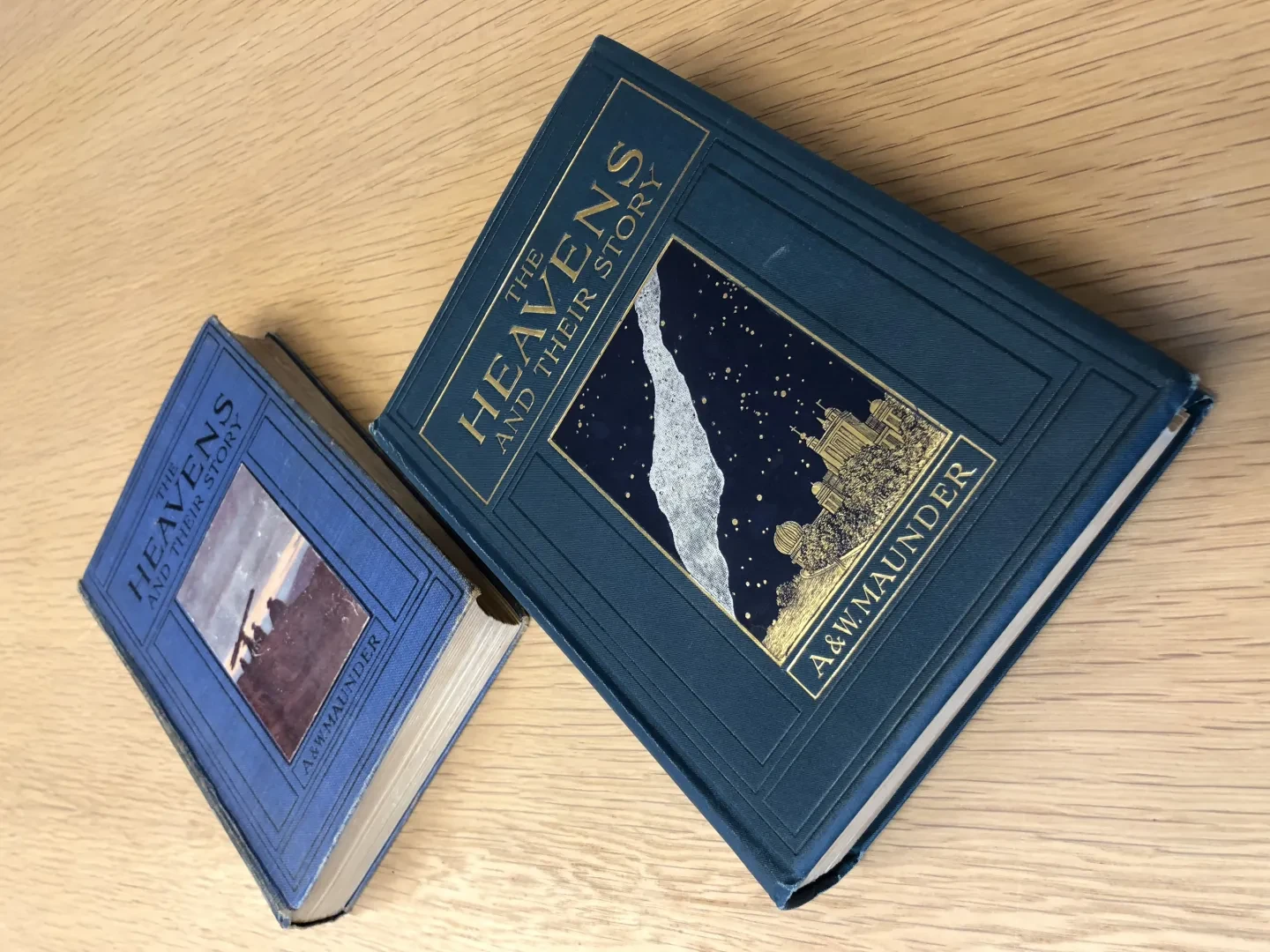
In this blog we look at a practical astronomical work written by the husband and wife team of Walter and Annie Maunder. The Maunders worked in the Solar Department of the Royal Observatory Greenwich in the early 1890s.
The Heavens and their Story (RMG Item ID: PBH8641) was published in 1908 and although it is credited to both Walter and Annie Maunder, Walter states in his preface, that:
'The present book, which stands in the joint names of my wife and myself, is almost wholly the work of my wife, as circumstances prevented my taking any further part in it soon after it was commenced.'
The volume strives to be more than an instructional tool for astronomy but seeks to inspire the reader to find out more about the workings of the solar system.
'It is not intended as a text-book to teach astronomy; rather it has been written with the hope that the reader may be drawn to study astronomy for himself.'
The book, which contains eight coloured plates and 38 astronomical photographs, first considers the movements of the sun, moon, stars and planets before looking in more details at the facets of the sun, including the sun’s surface and sun spots.
The question of whether sunspots may have an impact on the Earth is the focus of chapter seven. This is approached in a very accessible way, using an analogy drawn from Sinbad the Sailor to introduce the concept of sun spots!
Recounting an adventure where Sinbad and his companions are camped on what they believe to be a desert island, they are shocked to find the island begins to sink after lighting a fire. They have, in fact, woken the sleeping whale that they are actually camped on! Maunder points to the possible resemblance between islands and whales, both large masses but with one fixed and the other mobile, but constant to certain regions. As she states:
'With sun-spots it is as with whales rather than with islands. … Unlike islands, they are not fixed, but they migrate, wandering to and fro.'
Key questions are posed about the study of sun spots, such as how to differentiate one spot from another and recognise it again in a future observation. Maunder states that the changes observed in sunspots “hints at the action of mighty forces below the surface” of the sun.

Annie Maunder was an accomplished solar photographer and one of her images of the sun’s corona, from a mission to observe a solar eclipse in Mauritius in May 1901, appears in the publication. Maunder explains that astronomers aim to observe eclipses from locations that are far apart in order to view the eclipse over a longer period:
'So the observers who watched the eclipse of 1901 in Mauritius watched it an hour and a half earlier than the observers who saw it in Sumatra. And it was thus found that, in such an interval of time, the shape of the corona near the chief spot and prominence underwent a distinct alteration.'
Chapter eight covers the practical advantages of studying the sun during a solar eclipse and Annie provides several stirring descriptions of the appearance of the sun during the eclipse. One image that is repeatedly used is the idea of the solar flares and prominences appearing as the petals of a flower:
'… when I saw the sun’s eclipse in 1898 it seemed to me as if a child had been playing the game of ‘Loves me, loves me not’ until but three or four of the sun-flower’s petals had been left in the red-rimmed, black-hearted stalk.'
The Heavens and their Story continues to look at each of the planets in turn, Jupiter, Saturn, Venus and Mars as well as the Moon and comets. The book concludes by looking at stars in other constellations and at nebulae.
It is in the study of nebulae that we can see the Maunders reflecting the developing knowledge of the time in which they are writing. Methods for astrophotography are investigated, using the example of the stars of the Pleiades as captured by the Astrographic Telescope at the Royal Observatory, Greenwich. An exposure time of 40 minutes is used to highlight the nebulous region around the stars.

Works such as this provide a snap shot at the evolution of the study of astronomy and can provide us with a history of the development of astronomical knowledge.
We hold two editions of The Heavens and their Story in the Caird Library. The editions have slightly different covers with one providing a charming rendering of the Royal Observatory at Greenwich and the other showing a scene of astronomers at work during the total solar eclipse of August 1896 as viewed from Lapland.

Both covers reflect aspects of the careers of Walter and Annie Maunder, both from their practical observations and their working environment at the Royal Observatory.
The cover of the book is not the end of Annie Maunder’s association with the site of the Royal Observatory. In 2018, the Royal Observatory Greenwich’s new Annie Maunder Astrographic Telescope was named in her honour. For more information about Annie’s life and work click here